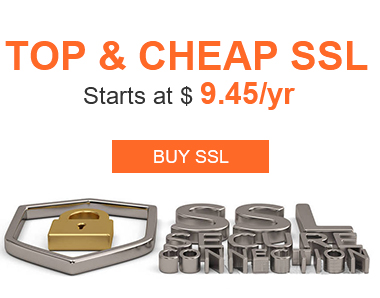SSL Certificate
Deploy an SSL certificate to enable HTTPS encryption of websites, trusted identity authentication and prevent against data leaks or tampering during transmission.
Get SSL Certificate >Blog > How to Use a Single SSL Certificate to Secure Multiple Domains
Tag:
SSL Certificate
Wildcard SSL Certificate
Subject Alternative Name (SAN) Certificates
Multi Domain Certificate
622:0
AmyNovember 28 2024

Securing Multiple Domains with One SSL Certificate
A person may run several businesses, each with its own website. If he wants to use one certificate to protect multiple websites simultaneously, how can this be realized? You have come to the right place if you have the same question.
SSL (Secure Sockets Layer) is employed to establish a secure and encrypted channel connecting the client side and the server side. It encrypts the information being transmitted between them so as to guarantee that the data won't be disclosed or altered. When websites are set up with SSL certificates that are issued by reliable Certificate Authorities (CAs), users can view a security padlock located in the address bar and examine the specific details of the SSL certificates by simply clicking it.
SSL certificates come in various types, which are categorized according to their validation level and functionality. To secure multiple domains by using just one SSL certificate, you can either choose a multi domain/ Subject Alternative Name (SAN) certificate or a wildcard SSL certificate.

1.SAN Certificates
An SAN SSL certificate is a common way to secure multiple domains. It allows you to include multiple domain names (such as example.com, www.example.com, and subdomain.example.com) in a single certificate.
For instance, if you have three different e-commerce websites and you own these following domains www.clothingstore.com www.shoesstore.com www.hatstore.com and blog.hatstore.com, an SAN certificate can be used to secure all of them. This provides a convenient way to manage security for multiple related or unrelated domains under a single certificate.
2.Wildcard SSL Certificates
A wildcard SSL certificate is designed to secure a base domain and an unlimited number of its sub-domains. The format of a wildcard certificate usually adopts the form like *.example.com.
This means that it will secure the main domain (example.com) as well as any sub-domains such as sub1.example.com, sub2.example.com, and so on.
For example, if you’d like to secure examplecorp.com and all of its subdomains (hr.examplecorp.com, it.examplecorp.com, marketing.examplecorp.com, etc), a wildcard SSL certificate can be a cost-effective solution to secure all of them. However, it's important to note that a wildcard certificate won't secure other top-level domains like example.net or example.org and wildcard certificates are available for two levels of validation: DV and OV.
In all cases, it's important to ensure that the SSL certificate is properly installed and configured on your web server. The process can vary depending on the type of server software you are using (such as Apache, Nginx, or IIS). Additionally, you need to keep the certificate up-date to maintain security and avoid any disruptions to your website's functionality.
Top Multi Domain SSL Certificates of 2024
Positive SSL Multi-Domain DV Certificate
Sectigo SSL Multi-Domain OV Certificate
RELATED
2025-02-25 14:33:23
2025-02-18 10:58:56
2025-02-14 14:41:07
2025-02-08 17:31:15
2025-02-05 18:04:51
Categories

Free SSL Tools
Top Posts
Comments